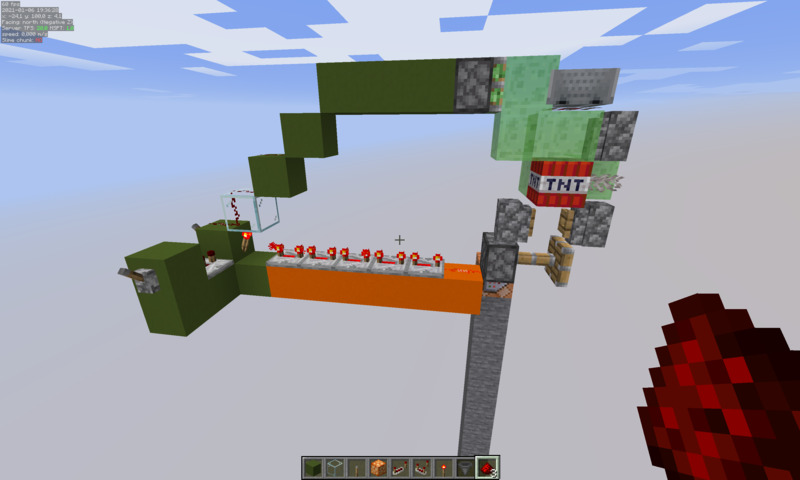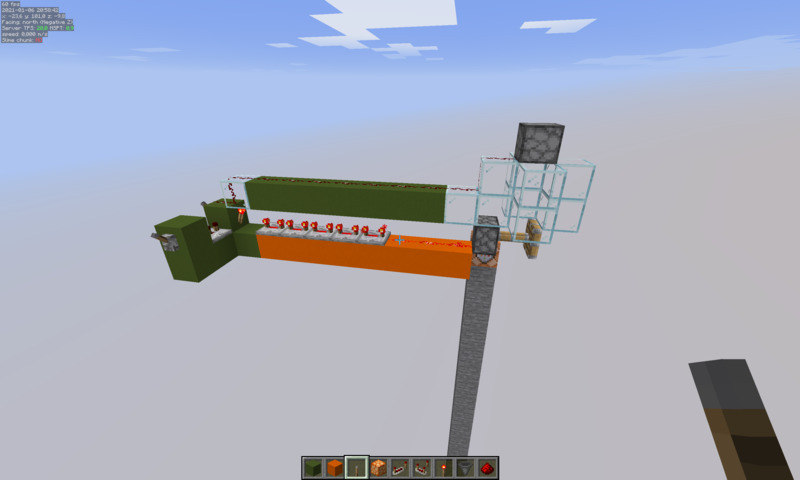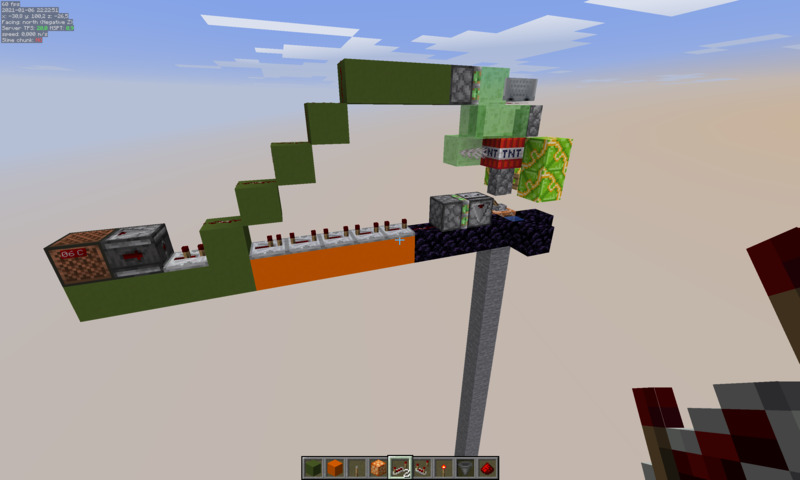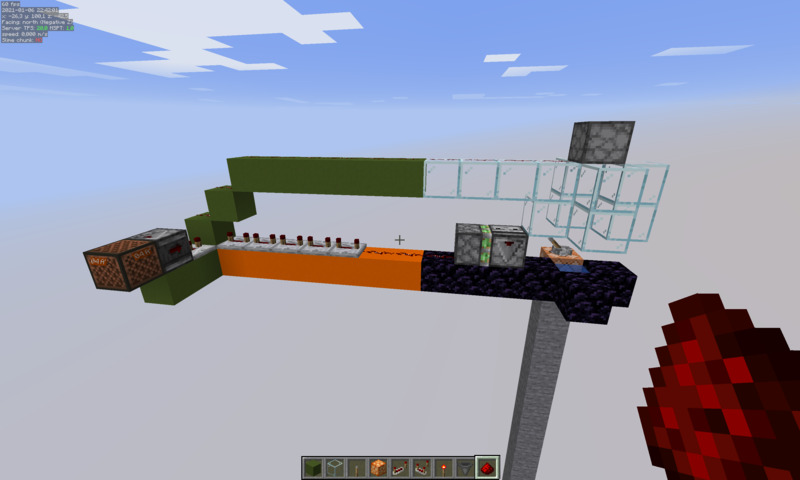Controlling TNT Fall Distance with Redstone
Falling TNT is caught by some mechanism and is allowed to fall again after some delay. Pistons and trapdoors are popular choices.
Designs using a retracting piston


- The input signal is typically long and is negated to control the piston
- Other push dupers can be substituted, e.g. a duper that ejects the TNT forward into a fall chute.
- Good for long fall distances
Designs using a trapdoor


- The input signal is typically a 3 or 4 gt pulse. The simplified calculator below assumes a 4 gt signal
- The water will not flow out because the trapdoor is only open for 2 game ticks
- Good for short fall distances - you can blow up blocks right up to the obsidian/waterlogged trapdoor.
If you waterlog the trapdoor you need blocks (preferably obsidian) all around it. This means the TNT must be aligned in all 4 directions, which makes the duper tricky to build. I recommend pushing the minecart and rail into place.
Simplified method for predicting fall distance
- Only repeaters on orange concrete count as delay
- Only works for the contraptions given above or contraptions with identical timings
- Eyeball the fall distance from the provided chart or use the calculator
| Delay in seconds (Orange Cement) |
Fall distance (Push Duper/Piston) |
Fall distance (Pull Duper/Trapdoor, Dispenser TD/Piston) |
|---|---|---|
- Orange line: calculated fall distance for Mytteri Duper with retracting Piston
- Red line: calculated fall distance for Kades Duper with waterlogged trapdoor or dispenser with either method
- The points are measured fall distances for the various methods
- Points above 75m happen when the TNT is never caught, so it falls it’s standard 77 blocks
- “boom” indicates that the delay was too short - the contraption was damaged
Exact method for predicting fall distance
The simplified calculator only works if your mechanism has the exact same timings as the ones the calculator is made for. If your design is different or directly activated by user input, the timings may be different.
If you can figure out the amount of fuse left on the TNT in the exact moment it begins to fall, you can use the calcular below which is always correct.
- Use
tick freezein carpet mod - Activate the mechanism
tick stepuntil the TNT is released from the piston/trap door again. Usedata get entity @e[type=tnt,sort=nearest,limit=1]and look for the tick in which it falls 0.04m. With trapdoors, you have to look at the change in y-coordinate, with pistons look atfallHeight- Write down the repeater setting and the measured remaining fuse
- Using the Exact Fall Distance calculator, figure out the change in delay you need (increasing the delay will shorten the fuse)
| Fuse time (gt) | Fall distance |
|---|---|
Dupers vs Dispensers
As you may have noticed, fall distance is different for dupers and dispensers.
With a dispenser, the TNT is primed 4 gt after the dispenser was activated.
With a duper, the TNT is primed the instant the piston starts moving.
So in general, TNT will fall shorter distances from a push duper. A pull duper dupes at the end of the signal, and the most convenient signal is 4 game ticks, so pull dupers typically have the same fall distance as a dispenser.
Direct User Activation
User input is handled specially by the game, it is processed before redstone. So I figured I would see if that makes a difference, and it does.
A push duper will prime the TNT one game tick later when activated directly by a lever or button, and the TNT falls for 1 game tick longer.
That came as a surprise to me, I would have expected the opposite.
In the other cases, direct user activation does not make a difference. Dispensers always take 4 gt to prime the TNT. And pull based dupers dupe at the falling edge of the signal. While it might be possible to set one up so that is directly powered, there are easier ways to get a 1 gt delay.